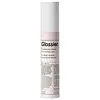What's inside
What's inside
 Key Ingredients
Key Ingredients

 Benefits
Benefits

 Concerns
Concerns

 Ingredients Side-by-side
Ingredients Side-by-side

Water
Skin ConditioningGlycerin
HumectantPropanediol
SolventCetyl Ethylhexanoate
EmollientC13-15 Alkane
SolventCetyl Alcohol
EmollientButyrospermum Parkii Butter
Skin ConditioningCetearyl Olivate
Coconut Alkanes
EmollientSorbitan Olivate
EmulsifyingPotassium Cetyl Phosphate
EmulsifyingBetaine
HumectantRetinyl Sunflowerseedate
Skin ConditioningStevia Rebaudiana Leaf/Stem Extract
MaskingOphiopogon Japonicus Root Extract
Skin ConditioningCamellia Oleifera Leaf Extract
AstringentAloe Barbadensis Leaf Juice
Skin ConditioningSodium Hyaluronate
HumectantTocopherol
AntioxidantCoco-Caprylate/Caprate
EmollientEthylhexylglycerin
Skin ConditioningGlycol Stearate
EmollientGlyceryl Stearate
EmollientCaprylic/Capric Triglyceride
MaskingMaltodextrin
AbsorbentXanthan Gum
EmulsifyingBenzoic Acid
MaskingSodium Hydroxide
BufferingCarbomer
Emulsion StabilisingSodium Acrylate/Sodium Acryloyldimethyl Taurate Copolymer
Emulsion StabilisingTrisodium Ethylenediamine Disuccinate
Water, Glycerin, Propanediol, Cetyl Ethylhexanoate, C13-15 Alkane, Cetyl Alcohol, Butyrospermum Parkii Butter, Cetearyl Olivate, Coconut Alkanes, Sorbitan Olivate, Potassium Cetyl Phosphate, Betaine, Retinyl Sunflowerseedate, Stevia Rebaudiana Leaf/Stem Extract, Ophiopogon Japonicus Root Extract, Camellia Oleifera Leaf Extract, Aloe Barbadensis Leaf Juice, Sodium Hyaluronate, Tocopherol, Coco-Caprylate/Caprate, Ethylhexylglycerin, Glycol Stearate, Glyceryl Stearate, Caprylic/Capric Triglyceride, Maltodextrin, Xanthan Gum, Benzoic Acid, Sodium Hydroxide, Carbomer, Sodium Acrylate/Sodium Acryloyldimethyl Taurate Copolymer, Trisodium Ethylenediamine Disuccinate
 Reviews
Reviews

Alternatives
Ingredients Explained
These ingredients are found in both products.
Ingredients higher up in an ingredient list are typically present in a larger amount.
Tocopherol (also known as Vitamin E) is a common antioxidant used to help protect the skin from free-radicals and strengthen the skin barrier. It's also fat soluble - this means our skin is great at absorbing it.
Vitamin E also helps keep your natural skin lipids healthy. Your lipid skin barrier naturally consists of lipids, ceramides, and fatty acids. Vitamin E offers extra protection for your skin’s lipid barrier, keeping your skin healthy and nourished.
Another benefit is a bit of UV protection. Vitamin E helps reduce the damage caused by UVB rays. (It should not replace your sunscreen). Combining it with Vitamin C can decrease sunburned cells and hyperpigmentation after UV exposure.
You might have noticed Vitamin E + C often paired together. This is because it is great at stabilizing Vitamin C. Using the two together helps increase the effectiveness of both ingredients.
There are often claims that Vitamin E can reduce/prevent scarring, but these claims haven't been confirmed by scientific research.
Learn more about Tocopherol